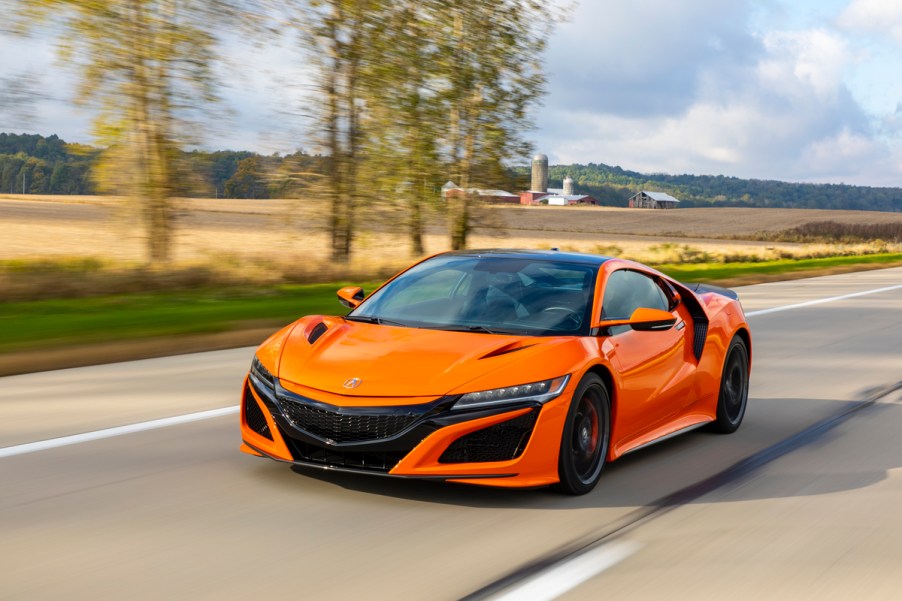
Why Do Honda, Nissan, and Toyota Continue To Make Sports Cars?
The Toyota Supra, the Nissan Z, and the Acura NSX are all familiar nameplates that ushered in a new dawn for Japanese sports cars in the U.S. Not only were they fast and cool-looking, but these cars were also symbols of technological advancements that were more than just muscular coupes that relied on big V8 engines and rear-wheel drivetrains. Instead, these Japanese sports cars utilized turbocharged engines and high-revving V6 engines for propulsion.
And with the rerelease of the new Acura NSX, Toyota Supra, and even the Nissan Z in the past couple of years, it looks like they are here to stay. But considering we live in a world filled with SUVs, why do these Japanese automakers keep making sports cars?
Sports cars help Japanese automakers standout
While you might think that the Japanese sports car segment is dwindling, in actuality, it’s staying afloat in the marketplace. A recent video posted by CNBC about Japanese sports cars brought up the point that niche cars like the Acura NSX and the Toyota Supra make their respective automakers standout in a sea of SUVs and commuter cars by giving prospective buyers a sportier option amongst a lineup of more practical commuter cars.

Additionally, the automakers are fully aware that there’s big business in reviving nameplates from the past in order to gain new interest. For example, old muscle car enthusiasts like to hear household names like “Mustang,” “Challenger,” and “Camaro” still being tossed around in the market place and they will continue to buy them as the automakers will make them. The same rule applies for Japanese sports cars as manufacturers like Honda, Toyota, and Nissan most likely don’t mind getting rich on niche nameplates.
Some buyers wanted these cars but could never afford them
Speaking of nostalgia, another reason the Japanese automakers keep making sports cars is that there are many consumers that grew up wanting cars like the Mazda RX-7, NSX, and Supra, but could never afford them. And thanks to movies like those compiled in the “Fast and Furious” franchise, which kept the import tuner fire burning all these years, there is still a demand for them. But as CNBC pointed out in its video; consumers don’t just want watered-down versions of the original cars with familiar nameplates slapped on them, they want something that’s uniquely Japanese just like the originals were.

The second coming
Back in 2017, Akio Toyoda, the president of the Toyota Motor Corporation, declared “no more boring cars” as a company-wide decree, which is most likely why we have seen TRD versions of sedans like the Camry and Avalon, as well as the RAV4. But is that the automaker’s ploy to keep would-be and even past enthusiasts interested in their lineup? Most likely. But the question remains as to if marketing like that actually helps the bottom line.
Ultimately, with the return of old, popular tuner cars like the Supra and NSX, it’s safe to say that we’re witnessing the second coming of Japanese sports cars in the market. And although tuner car enthusiasts will continue to gravitate toward bigger SUVs in order to accommodate their families, there will always be a special place in their minds, and in the market, for Japanese sports cars.



